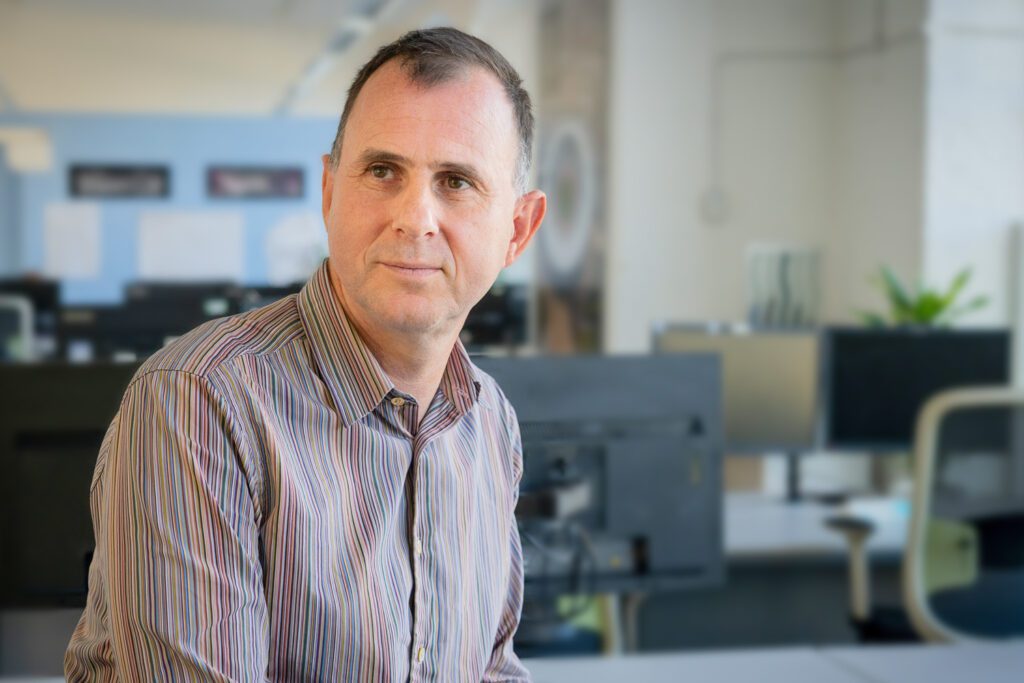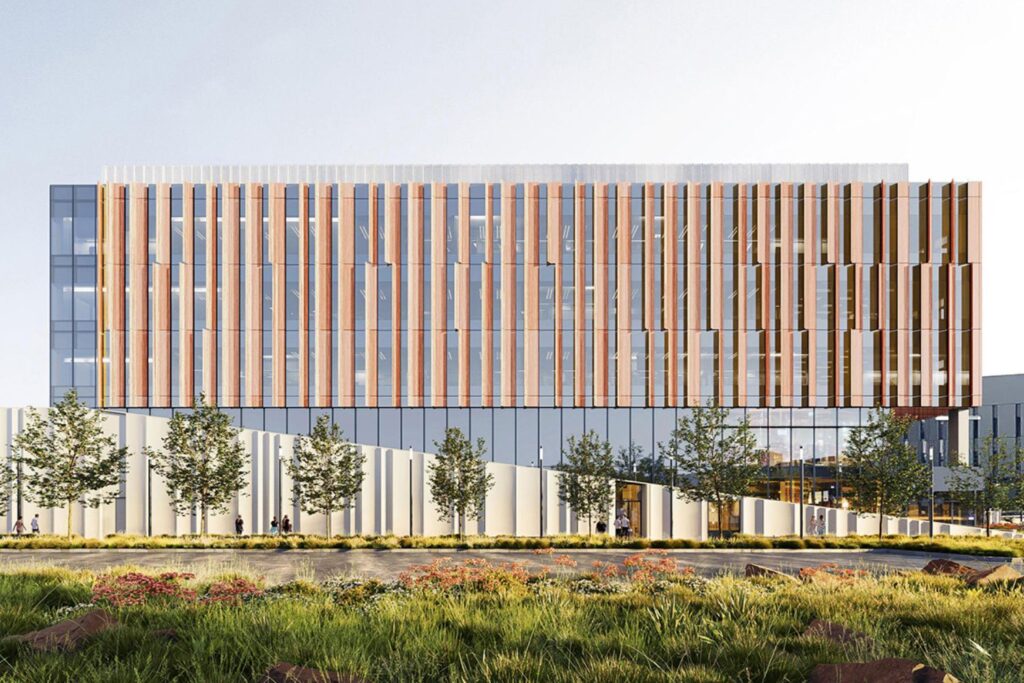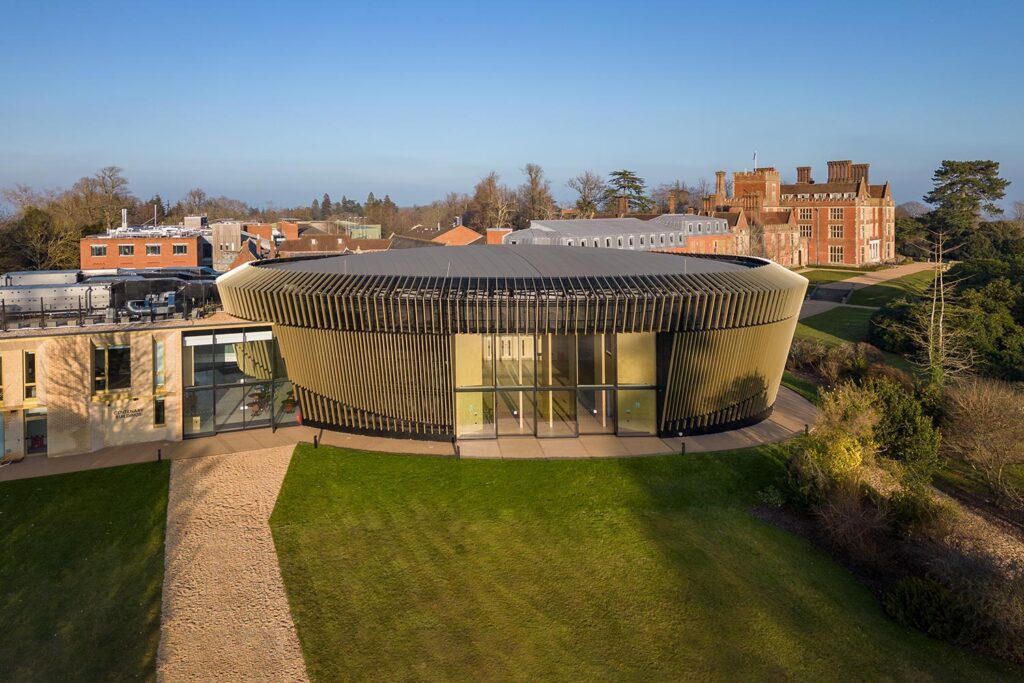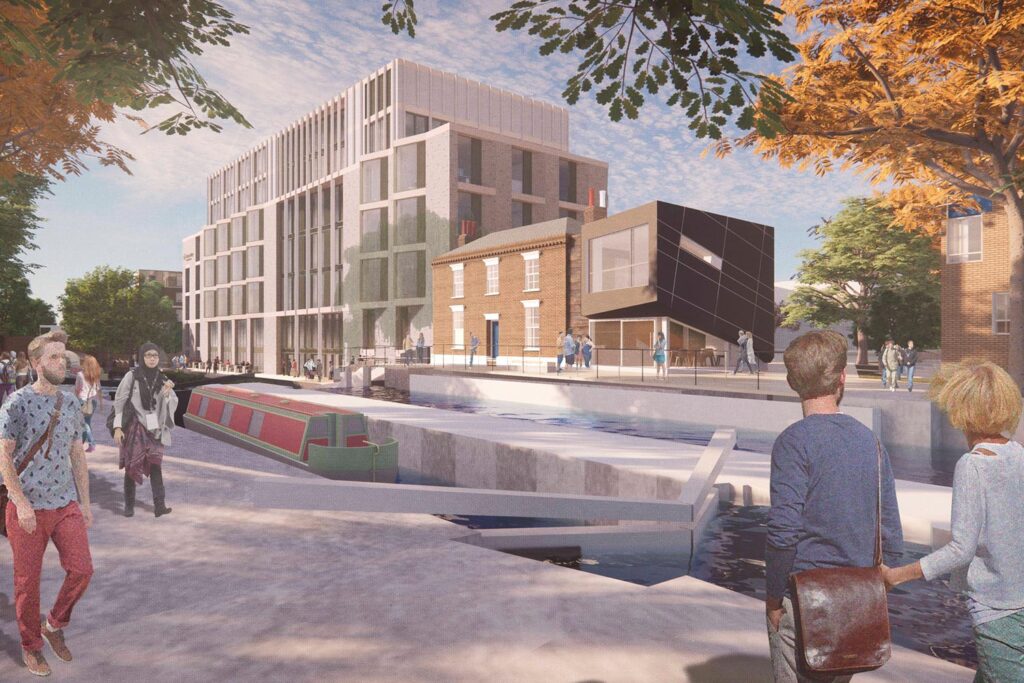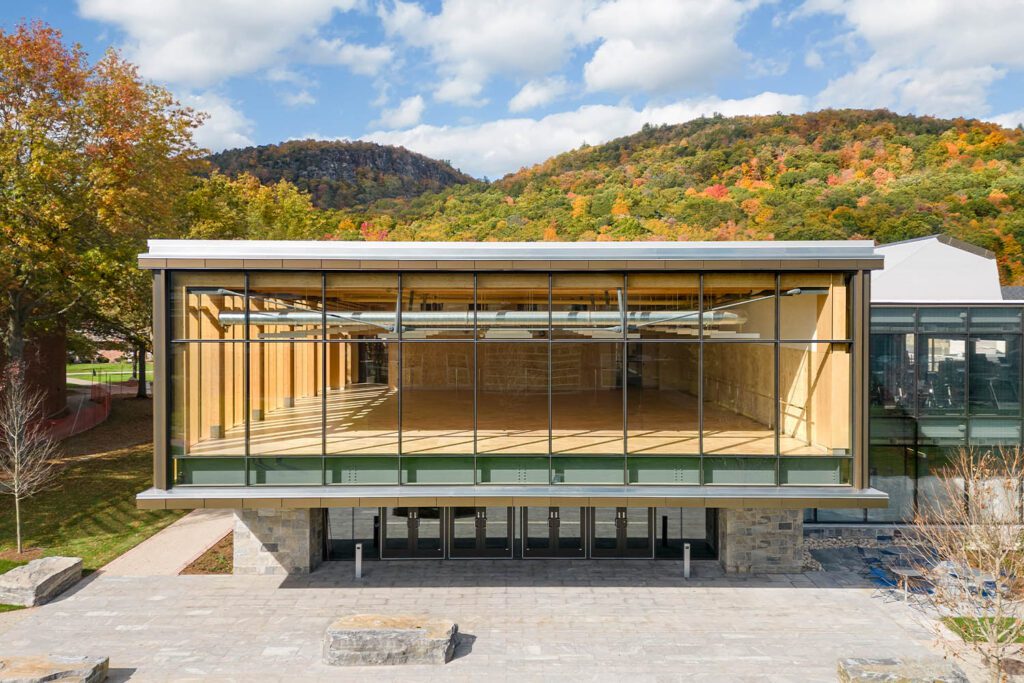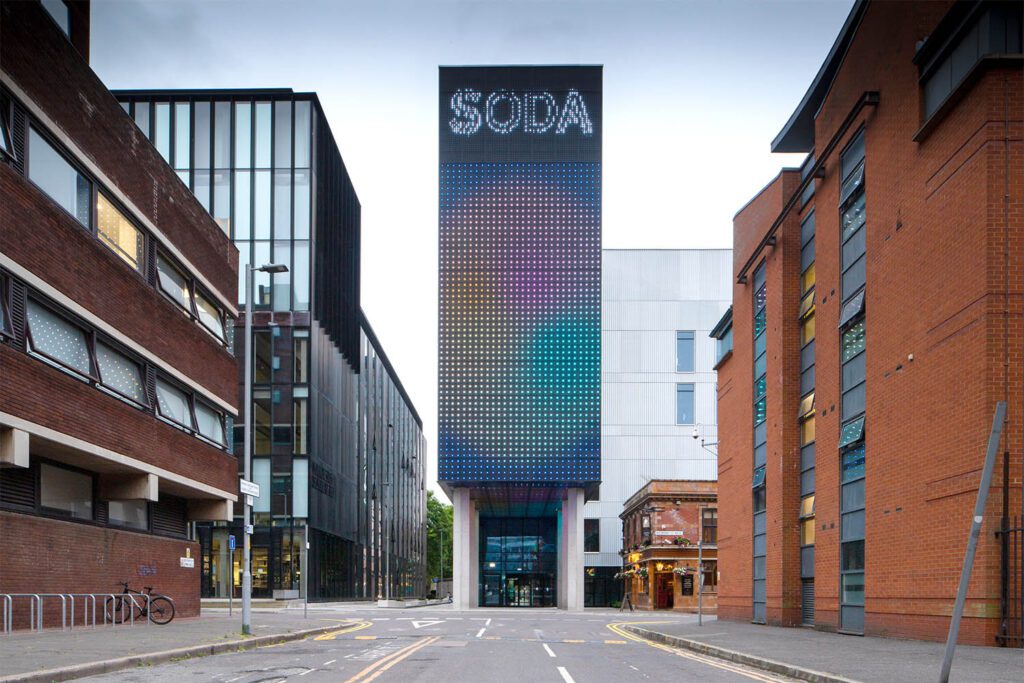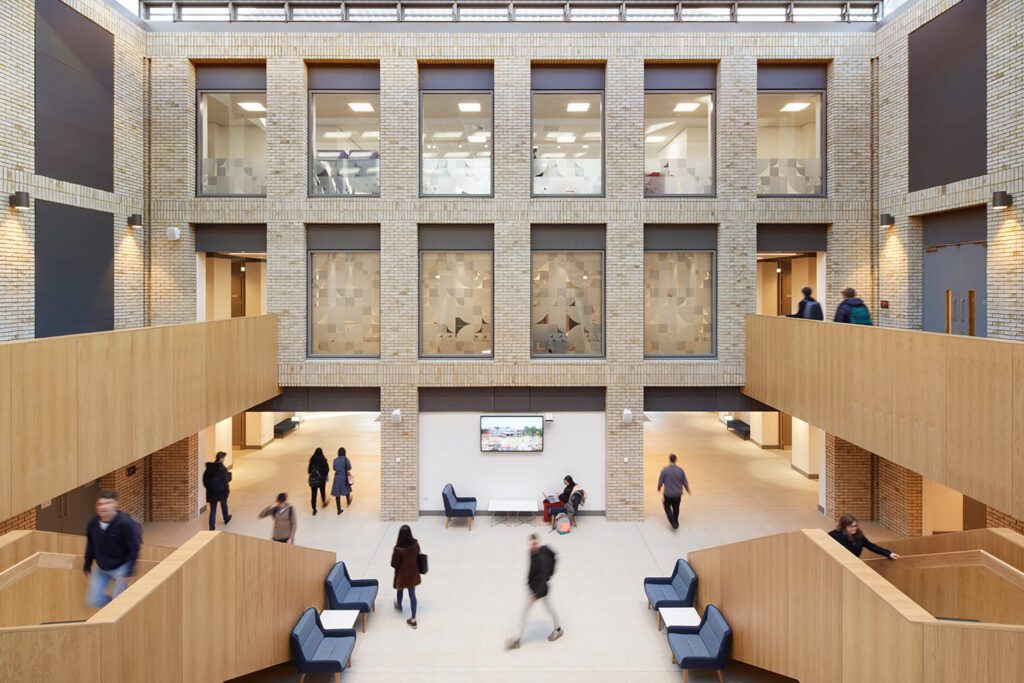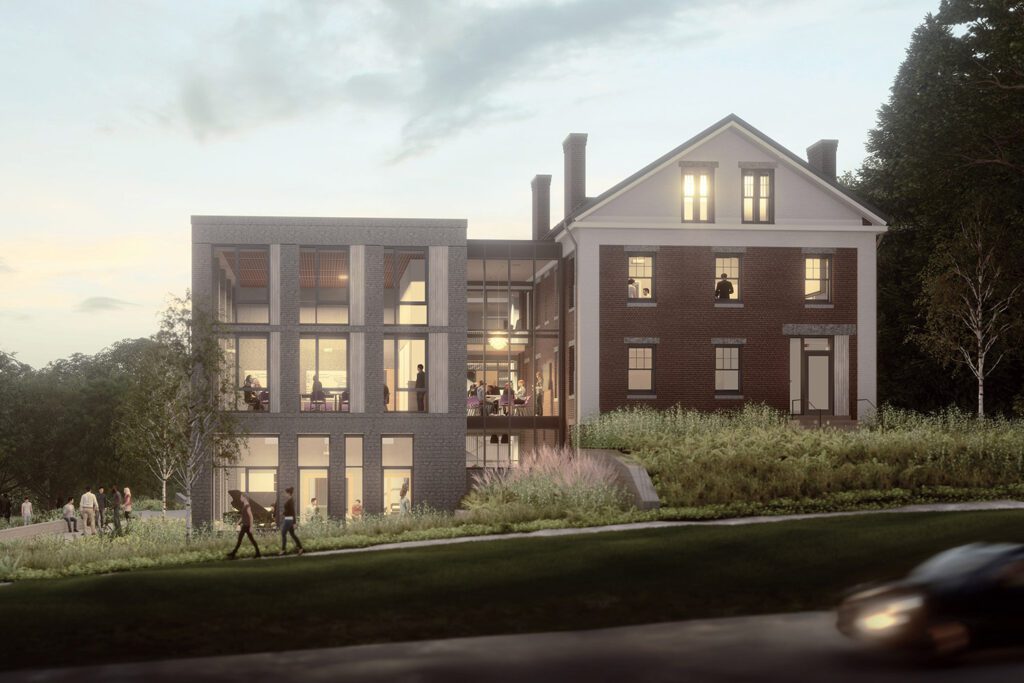
Amherst College, The Aliki Perroti & Seth Frank Lyceum
Massachusetts, USA
Project details
Client
Amherst College
Architect
Bruner/Cott Architects
Duration
Completing in 2023
Services provided by Buro Happold
Audio Visual (AV), Building Services Engineering (MEP), Energy consulting, Fire engineering, Information Management, Sustainability
Inspired by the Lyceum of Ancient Athens, The Aliki Perroti & Seth Frank Lyceum will bring together the Center for Humanistic Inquiry (CHI), the College’s History department, and other faculty members selected to drive discourse and critical thinking at Amherst College.
As with its ancient namesake, spaces will be arranged in a way that encourages interaction, collaboration and conversation for members of the faculty, students and the greater Amherst College community.
The 20,000ft2 project incorporates an historic house sited at the heart of Amherst College’s campus. The interior of the house will be retrofitted as faculty offices, classrooms and support spaces. A new two-storey addition will be placed along two sides of the existing house, separated by a transparent exterior wall. These two elements contain the larger, more public spaces, an event space and a flexible classroom. A new three-storey office wing wraps behind the existing house and creates a linear band of offices looking west.
Challenge
Architects Bruner/Cott created a design intended to leverage the adjacencies of offices, classrooms, a ground floor event space, and an outdoor terrace all connected by an open common area. This central space establishes places for the community to share thoughts, ideas, and collaborate.
Buro Happold was engaged to provide multidisciplinary engineering services for the transformation of this historic building into a state-of-the-art, high-performance space.
The design vision is for a complex that blends dynamic new architecture with the historic brick building at a scale that responds to its context and the heritage of the campus. The new building will be comprised of environments for focused work, as well as daylit offices with views of the surrounding campus.
The Lyceum’s environmentally sustainable features will reflect the College’s Carbon Action Plan to be a carbon-neutral campus by 2030, by exploring a zero operational carbon design. One of the key challenges was to coordinate tight ceiling heights in the existing building renovation, merging with comparable ceilings in the new wing, which allow the two elements to blend aesthetically. For our MEP teams, this would mean finding elegant solutions to hiding all the services in the relatively confined spaces of the ceilings and floors.

Solution
We worked closely with the architects from an early stage to ensure that this requirement to distribute all the services horizontally, across the floorplate, was factored into the nuances of the design. This was achieved with the incorporation of a main distribution corridor running through the new building. The building management systems and more substantial MEP components were sited in a central hub out of sight, in the basement of the historic building.
We produced complex energy models for the building at each stage of the design. Our MEP team removed the existing gas-fired boiler and installed a new building management control and VRF [variable refrigerant flow] system, which will allow the complex to be 100 per cent electrically heated. With a clean energy supply, this allows for carbon-free heating. Some of the renewable energy will be generated on site, with a new array of photovoltaic solar panels added to the flat roof of the new structure.

The design incorporates a two-storey high classroom space, which created a challenge for our audio-visual (AV) team when it came to incorporating video and projection. There was a desire that the screen would not block out the high windows in the space.
We implemented the use of a product called a Rope Climber – a projection screen that drops down out of the ceiling on wires. The screen then folds out from a separate roller halfway down. This creates an elegant solution, allowing the screen to be stored away unobtrusively when not in use. Another collaboration space in the building required a highly adaptable AV design, with multi-array microphones incorporated throughout the room to allow for impactful hybrid teaching via video call technology.

Value
For both the interior and exterior, the materials palette prioritised those with lower amounts of embodied carbon and products that can store carbon, such as timber and other plant-based materials. When coupled with the efficient mechanical systems designed by the Buro Happold team, this project will showcase how buildings can reduce their impact from construction and throughout their operational life.
Indoor air quality, natural ventilation through operable windows, a daylighting strategy, and views to the surrounding environment were additional considerations brought together by the wider design team to improve occupant wellbeing. The Aliki Perroti & Seth Frank Lyceum will be a landmark complex, surrounded by public spaces that will host a variety of events, salons, performances, meeting, lectures, receptions and celebrations.







